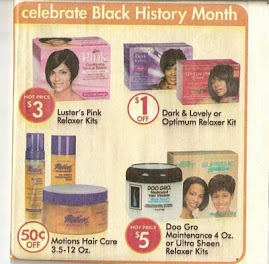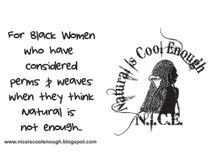Recently, I took a trip to an amazing place, Nia Nub, which is one of the San Blas Islands. Getting there was quite a journey, which entailed flying to Panama City, Panama, then taking a small plane to an island, followed by a 1 hr. + dug out canoe ride to the destination island, Nia Dub. On this island the indigenous people, the Kuna Yala, are living as they have, with some changes based on visits there by individuals and groups such as Missionaries, Researches, Peace Corp members and others, of which some appreciate their way of life and others want to "help" them although it is my perspective that the way of life of the Kuna Yala, must be valued and appreciated as it is, and would help to educate many, in our modern, technological approach to life, about the true essence of rewarding, day to day, meaningful experiences, if understood by visitors.
So why is this relevant to N.I.C.E.? Simply because as I was there, one of the many things that I realized was that maintaining my natural hair became a matter of very little concern and there was an ease about it that I don't think I've ever experienced before. I felt at all times, while there, that to have my hair in any way but natural, on this island, with the beautiful people there, would have been counter to who they are because every aspect of their lives embraces who they really are: the Kuna Yala people.
So below, are pictures of my initial journey: the flight, the dugout canoe and arrival at the island, Nia Dub.
 |
| The Driver of the Dugout Canoe |
 |
| How the Dugout Canoes are made... |
 |
| The dock where our dugout canoe is heading... |
Once I arrived, I instantly felt like I had gone back in time as I looked at the beautiful, indigenous brown people with dark hair, short stature and thin builds, for the most part.
 |
| Enjoying a moment with a Kuna Yala woman |
There was a warm and gracious feeling of welcome as they looked at me, and I at them, knowing that I was about to have an experience of a lifetime as their guest. Soon after my arrival, I met the family that I would stay with, in their hut, where my bedding would be a hammock and the floor comprised of dirt. I was ready for this...to essentially let go of all of the modern comforts of my life and to live without the amenities, including technologically, that I have grown so accustomed to. My napsack, shoulder bag and one small piece of luggage were filled with all that I thought I would need, including t-shirts, wrap skirts, flip flops, sneakers, bug spray, a first aid kit, herbal remedies (in case I experienced any kind of illness) and healthy snacks that I love (dried vegetable chips, dried apricots, raisins, nuts, etc.) in case I found myself hungry at inopportune times, my hammock and of course, my camera.
 |
| Grandmother of my host family hanging my hammock |
 |
| Helping ro ready an area in the center of the village where visitors gather |
After helping my colleagues set up the central location which would be our gathering space, I was off to my "home" for the week with my new "family" where they assisted me with my bags, hung my hammock and began to get to know me through initially awkward but friendly conversation. They speak their language, Tule, with just two people in their family that speak Spanish (the teenage daughter and her father) and I speak English primarily with some Spanish. I realized that communication would be challenging and interesting so my plan was to smile a lot so they would be assured that I was both kind and friendly.
I truly looked at this beautiful family that I was about to live with very briefly, which consists first of the grandfather and grandmother, and appreciated deeply, their way of life. The grandmother is clearly in charge of the entire house based on her demeanor and her take charge status in terms of my being a guest and her direction of the movement of everyone in the house. When she was present, everyone seemed ready to follow her direction. She was dressed in traditional attire at all times and immediately proceeded to hang my hammock (see picture above) and sweep the dirt floor (see picture below) with a broom that consisted of leaves from the trees and branches. Since they are matri-local, her son-in-law had moved into her home where her daughter lives. The daughter and her husband have three children including a baby boy, who was not yet walking, and is nursed by his mother frequently, a teenage daughter and teenage son, all who live in the hut. The grandmother's husband also lives in the home, and is a Curandero (natural healer) and is well-known on the island for his services. Hence, the family that I was staying with was a family of status.
 |
| The grandmother sweeping the floor and tidying up for my stay with the family |
 |
| The teenage daughter of the family with the baby and a girl who is visiting from another hut. The man is her grandfather who is a Curandero (healer) on the island |
As I settled in, I realized that some of my normal concerns, such as the upkeep of my locks, became less precious to me although I felt proud of the natural state of my hair. Imagine if I had a weave or perm or some other aspect of myself that was fake while residing with these people. I think I would have felt ridiculous as everything about them was authentic. I realized that my natural hair harmonized with the notion that every aspect of the lives of the Kuna Yala people was connected to the earth, the water and what is truly natural. As exhibited in the picture directly above, although missionaries come to their village and bring dolls with blonde hair to the little girls that look nothing like them and that do not reflect their culture, they remain true to their cultural norms in their appearance. It was fun to spend a bit of time in a photo shoot with them in their traditional attire relating to and embracing their culture that is absolutely close to nature and, which exemplifies that Natural Is Cool Enough. It was an honor and a privilege to have the experience of a glimpse into their lives.
 |
| My wearing of traditional dress for a photo with them. Kuna Yala people, generally, do not smile in photos. |
 |
| Feeling good in knowing that on Nia Dub with the Kuna Yala, Natural Is Cool Enough |

























1 comment:
What a cool experience! My grandmother is from Panama and she is of Kuna descent but she hails from Panama city. It is wonderful to see that you got to live amongst the Kuna and understand the essence of their culture!
Post a Comment